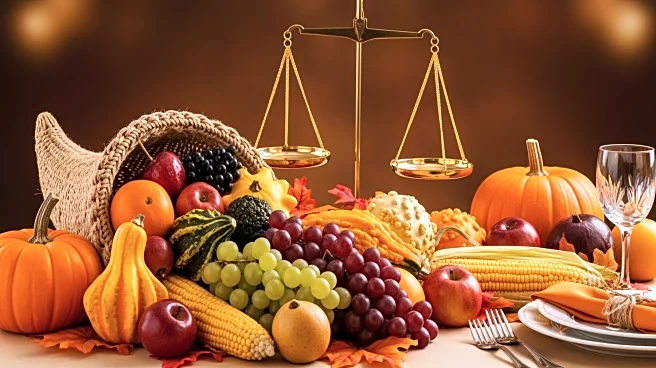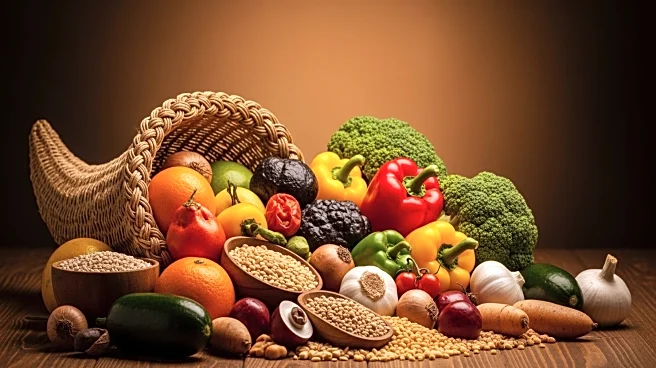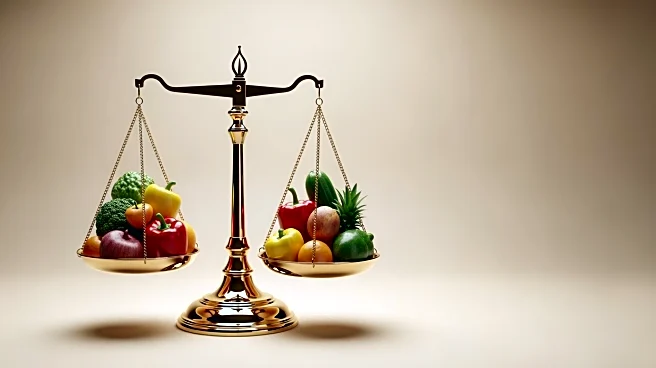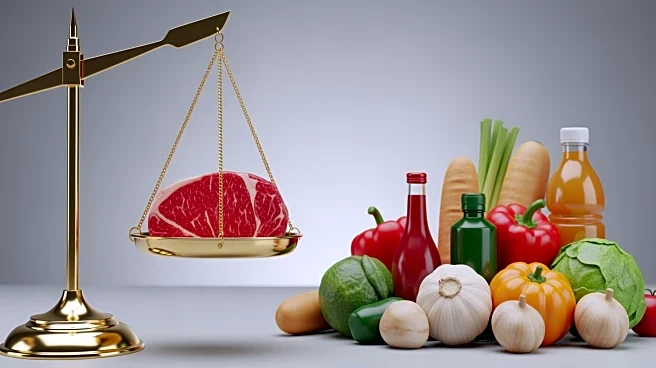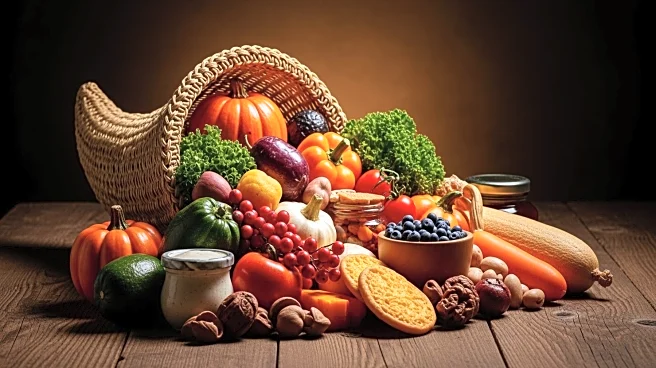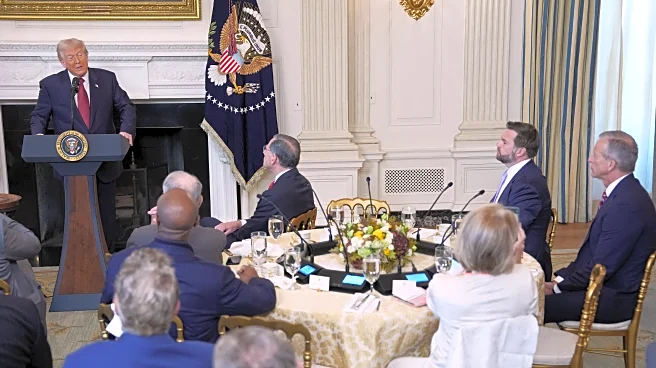What's Happening?
President Trump has recently claimed that the cost of a Thanksgiving meal in 2025 is 25% lower than in 2024, citing a prepackaged meal basket from Walmart. This claim has been scrutinized and found to
be misleading. The 2025 meal basket, priced at under $40, feeds 10 people, whereas the 2024 basket cost approximately $56 for eight people. The apparent cost reduction is attributed to the 2025 basket containing fewer items and different products, making it more affordable. For instance, the 2025 basket includes 15 items compared to 29 in 2024, omitting several dessert and savory items. Additionally, the size and quantity of some items have been reduced, such as the turkey and cream of mushroom soup. This strategy highlights retailers' efforts to attract customers by offering seemingly lower prices.
Why It's Important?
The significance of this development lies in its impact on consumer perception and economic behavior. While the claim of reduced costs may appeal to budget-conscious consumers, the reality of fewer items and substitutions may not meet expectations. This situation underscores the importance of transparency in marketing and the potential for consumer dissatisfaction. Economically, the broader context of rising grocery prices, which are 2.7% higher than in 2024, suggests that the overall cost of living continues to increase. Retailers' strategies to offer lower-priced meal options may provide temporary relief but do not address the underlying issue of inflation. Stakeholders such as consumers, economists, and policymakers are likely to scrutinize these claims and their implications for household budgets and economic policy.
What's Next?
As Thanksgiving approaches, consumers will need to navigate these marketing strategies to make informed purchasing decisions. Retailers may continue to adjust their offerings to remain competitive, potentially leading to further changes in product availability and pricing. Economists and consumer advocacy groups may increase their efforts to provide accurate information and guidance to the public. Additionally, policymakers might consider addressing the broader issue of rising grocery prices and their impact on American households. The ongoing dialogue between retailers, consumers, and policymakers will likely shape future marketing practices and economic policies.
Beyond the Headlines
This situation highlights the ethical considerations in marketing practices, particularly the balance between competitive pricing and consumer transparency. The use of smaller or altered product offerings to create the appearance of cost savings raises questions about consumer rights and the responsibility of retailers to provide clear and honest information. In the long term, this could lead to increased regulatory scrutiny and potential changes in advertising standards. Culturally, the tradition of Thanksgiving and its associated costs may prompt discussions about the evolving nature of holiday celebrations and the economic pressures faced by families.


